#japanese fighter planes
Explore tagged Tumblr posts
Text

F-15J of the JASDF rehearsing for the 2018 Nyutabaru Airshow
#JASDF#Japanese Air Force#McDonnell Douglas#F-15#F-15J#Eagle#Military aviation#jet#plane#Fighter#aircraft
33 notes
·
View notes
Text
#aircraft carrier#navy#army#japanese navy#military#aircraft#air force#us air force#usaf#fighter jet#aviation#airplane#airplanes#aviation photography#military aviation#photography#fighter plane#plane#us navy#amphibious assault ship#helicopter carrier
32 notes
·
View notes
Text

F1M Pete
@MatsudaHI via X
#f1m Pete#ww2 history#ww2 aircraft#floatplane fighter#ww2#pacific theater#imperial japanese navy#ww2 aviation#wwii aircraft#wwii planes#ww2 art
12 notes
·
View notes
Text
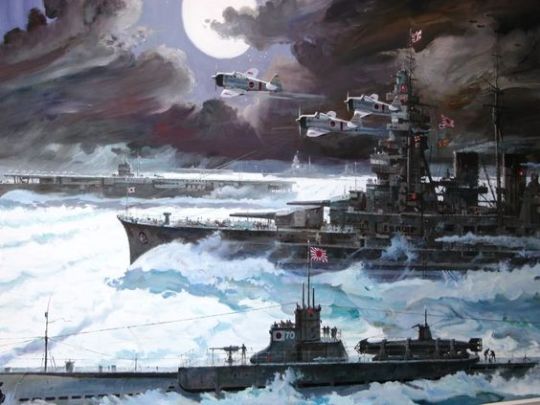
Imperial Japanese Navy
#Imperial Japanese Navy#military#IJN#submarine#battleship#Mitsubishi#Zero#fighter plane#WWII#war#Japan#日本
68 notes
·
View notes
Text
There we go. One of them illustrations have the distinct infamy of being used in one of Joseph Lai's films with animes being plagiarized and bootlegged.
Take a guess which one.









Selections from the 1992 Japanese art book Illustrated Transportation, by Nobuo Otobe and Osamu Hirao. The full list of artists is available here.
#joseph lai#photo set#japanese sci-fi#Illustrated Transportation#90s#Tokiyoshi Kamoshita#mecha#motorcycle#plane#jet fighter#jet plane#space station#captain of cosmos
568 notes
·
View notes
Text
Spy Family Chapter 97 mistranslation
I read the newest chapter in Japanese and English and there were some problems with the translation but it wasn't a huge deal... then I got to the last line...

It's the complete opposite of what she said... and they didn't even get the fighter planes right and they're IN THE PICTURE.
198 notes
·
View notes
Text




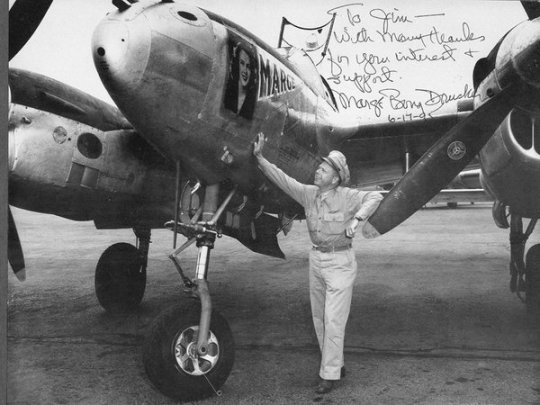
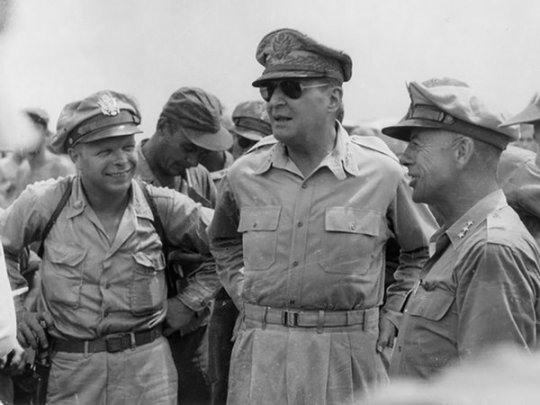

Richard "Dick" Ira Bong (1920 – 1945) was America’s top fighter pilot during the WW II, with forty confirmed Japanese aircraft down by his Lockheed P-38 Lightning fighter.
Bong considered himself to be a poor shot so to compensate, he would get very close to his target, sometimes even flying through the debris of exploding planes. His exploits include:
He was once caught alone by nine Japanese zeros. He turned to face them, took out three and managed to send the rest into retreat.
When escorting a small boat over the Pacific, he noticed a large crocodile following it. He promptly dropped down to sea level and blew the creature out of the water with his 20mm autocannon.
In 1942, he was temporarily grounded for looping over the Golden Gate Bridge and flying so low down a street in San Francisco that he blew the clothes off a woman’s clothesline. When reprimanding him, his commanding officer General George C. Kenney said:
“If you didn't want to fly down Market Street, I wouldn't have you in my Air Force, but you are not to do it anymore and I mean what I say.” Kenney later wrote, “We needed kids like this lad.”
The History of Fighting
291 notes
·
View notes
Text
can I just talk about Godzilla Minus One and how it was absolutely fucking brilliant for a minute?
It centered around a disgraced kamikaze pilot who hesitated, who was scared to die, so sabotaged his own plane before he could fly out. and because he sabotaged his plane, a crew of engineers had to hang back at the base, to try and fix it.
and then of course, this being a Godzilla movie, Godzilla attacks. kills most of them, excluding him and an engineer, who immediately blames him. says that if he had just died, then the rest of them would still be alive too.
his "cowardice" saved his life, and he was haunted by it, ashamed of "betraying" his country simply by wanting to live.
he spent the whole movie struggling with survivors guilt and feeling like he let his country down just by continuing to breathe.
and he couldn't forget the men he saw die, and he can't escape memories of the war, because he's living in the shattered remains of Tokyo after it was bombed, the place he used to call home, where his community is gone and his family is dead, and there is no escaping the death and devastation.
and the people who are still living? they hate him. they blame him for the loss of the war. they blame him for not dying for them.
and because he's haunted by his past, he cannot live in the present.
the guilt of being alive is too tightly wound around his heart. it can't beat even once without him being reminded of all the people whose hearts were nothing but dust now, and the outcome of the war feels like it's solely laid upon his chest.
and that's all very heavy. and I cried.
but that wasn't what I cried at. Because it wasn't the hopelessness that had the most impact on me. it was the end of the movie, where he was given the choice to redeem himself. to die for his country this time, and save them from Godzilla.
and he said he was ready, he can do it this time, he will be the hero. he will lay down his life this time.
only...
...this time, the engineer, who called him a coward... designed his new plane for this mission. and he gave him an ejector seat.
and the movie says this:
"This country has treated life far too cheaply. Poorly armored tanks. Poor supply chains resulting in half of all deaths from starvation and disease. Fighter planes built without ejection seats and finally, kamikaze and suicide attacks. That's why this time I'd take pride in a citizen led effort that sacrifices no lives at all! This next battle is not one waged to the death, but a battle to live for the future."
And it's like...
Oh it's so corny, it's always corny, when the message of a story is simply, life is precious.
But I don't fucking care.
It was still brilliant. It still hits every time. That's what made me cry. Not the hopelessness or the sad things, but the way the movie could be so heavy... while also being hopeful. optimistic.
Everything about that movie was just so perfect. A Godzilla movie actually set immediately after WW2 is a genius idea. The post war devastation. The criticism of Japanese imperialism, the war, and the way it treated its own people, both at home and abroad. The condemnation of kamikaze attacks and the callous disregard for human life.
And the deeply human story, of a man who was afraid to live, after seeing so much death.
Choosing to die wasn't easy. But choosing to live was even harder.
330 notes
·
View notes
Text

P-51D Mustangs of the 457th Fighter Squadron, 506th Fighter Group which are assigned to the northern airfield located on Iwo Jima, seen taxiing to the runway during preparations for a combat mission over the Japanese home islands in 1945.
I would like to point out that on the plane nearest the camera on the vertical stabilizer you can see the antenna of the AN-APS-13 tail warning radar.
63 notes
·
View notes
Text
I just special-interest ranted at a friend. I decided to share it with you instead.
youtube
Isabelle Fall knew exactly what she was writing.
The ability to use fetishistic and role drive and identity driven fixations to motivate
Over shame, and duty and histories To render the external the introspective.
Extrospective, I guess. Its funny too because, Yukikaze is about a very similar idea or at least touches on it. Its VERY #mechposting, and VERY #robofucker in its story and nature.
A pilot who has artificially induced autism and special interest, to make him a superhumanly capable pilot.
And it backfires; making him fall romantically in love with his plane.
youtube
Its only five episodes, and its based on one of the most well loved Japanese scifi novels of all time written in the 1980's -- with the anime being made in 2003.
The trick too is, the plane is intelligent. seems to reciprocate.
There's also ... kind of an implication the pilot has to be estrogenized for the conditioning to take, so he has the emotional bandwidth to handle it in the latest book apparently?
So its weirdly trans-adjacent too?
youtube
I remember too, lot of people on 2ch believed Rei Fukai is literally the character Anno based Rei Ayanami in Evangelion on???
Weirdly full circle then, that the planes are designed by Ituko Yamashita who designed the Evangelions too.
youtube
idk, I feel like Yukikaze either is, or is going to become a significant text to certain parts of Tumblr which haven't discovered it yet.
Like imagine if Solaris by Stanislaw Lem, 2001: a Space Odyssey, Top Gun and Signalis had a child. That child is Yukikaze.
It talks a lot about how people can't properly conceptualize of a foreign conflict, how disinformation is used and how people are tricked into falling into narritives and mythologies.
In with all this, its some how incredibly queer and has a love-triangle between a man, someone who has discarded gender almost entirely, and an AI driven fighter-plane. The air combat too and planes are rediculously well researched and designed.
idk, give it a go. Or don't. I'm not your mom.
71 notes
·
View notes
Text
Conan Puzzle Voice Line Translations
The Conan Puzzle Match-3 gacha game has a number of voiced lines associated with its character cards. Most of these lines are anime lines or same-y game-related phrases, but there were a handful I thought were fun out of context too. I've translated them here.
[Best Friends Since Childhood] Morofushi Hiromitsu & Furuya Rei

Special Voice 1
Hiro: Woah, Zero! You sure know your way around a knife now!
Furuya: It's all thanks to you, Hiro- ow!
Hiro: That's no good. You need to curl your left hand like a cat's paw when you're cutting. You'll struggle if you ever work part-time at a café or anything if you don't fix that.
Furuya: Don't worry. I'll never work part-time at a café.
Hiro: Huh? But you might need to for an undercover assignment or-
Furuya: (stubborn, sing-songy) I definitely won't ever work at a café!
[T/N: "Curling your left hand like a cat's paw" is a common Japanese saying for how to hold your non-dominant hand when cutting vegetables.]
Special Voice 2
Furuya: Hiro! Where are you going?
Hiro: Matsuda asked me to go shopping.
Furuya: Shopping?
Hiro: He asked for a DVD called Steamy XXX Hot Springs Vacation. He said the clerk would give it to me if I told them the name. I wonder if it's a travel documentary?
Furuya: M-Matsuda, that bastard...
[A Mission They Can't Escape] Matsuda Jinpei & Furuya Rei

Special Voice 1
Furuya: Matsuda! Fix my alarm clock, would you?
Matsuda: Why?
Furuya: It rings an entire thirty minutes later than I set it to. That means I'm late waking you all up as well...
Matsuda: Isn't that a good thing? It means we can sleep in thirty minutes longer.
Furuya: Matsuda... don't tell me you were the one to break my clock...
Matsuda: *innocent whistling*
Special Voice 2
Matsuda: Zero! You call Morofushi "Hiro", yeah?
Furuya: Yes. We're childhood friends, after all.
Matsuda: Gimme a nickname too. Something cool like "Hiro" or "Zero".
Furuya: Hm, I wonder... what about "Ero"?
Matsuda: E-Ero?
Furuya: Don't you like it? It rhymes with Hiro and Zero too.
Matsuda: Please just stick with Matsuda.
[T/N: In case you're unaware, "ero" means perverted in Japanese.]
[Aiming To Become a Police Officer] Date Wataru & Furuya Rei
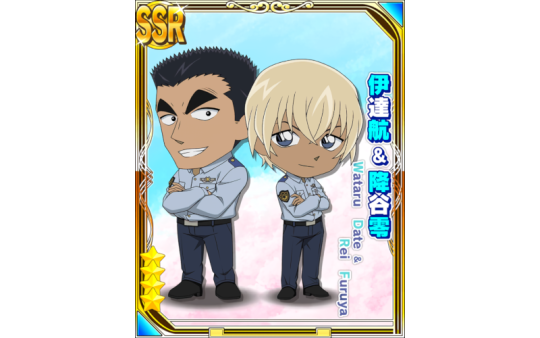
Special Voice 1
Furuya: Leader, I'm sure you know this already, but don't tell anyone I'm in Public Safety.
Date: Yeah. I'm telling anyone who asks that I dunno what you're doing or where.
Furuya: Thank you, leader. I'm currently infiltrating an extremely dangerous organization, after all.
Date: But still, drop me a line sometime, yeah? Only seeing you when we pay our respects to graves is kinda, y'know.
Furuya: Understood. Now then, I'll be seeing you next when we go pay our respects next year.
Date: Hey hey hey.
Special Voice 2
Furuya: Everyone was so shocked to learn you have a girlfriend.
Date: This again? You guys are way too shocked about this!
Furuya: Well, I thought it wouldn't be strange if you had a girlfriend.
Date: No, I'm pretty sure you were really shocked too.
[Childhood Friends Who Know Each Other Inside And Out] Matsuda Jinpei & Hagiwara Kenji

Special Voice 1
Hagiwara: Jinpei-chan!
Matsuda: What's up, Hagi?
Hagiwara: I'm going out on a blind group date again, but we don't have enough guys... lemme count on you again!
Matsuda: Don't wanna. You'll just take all the girls for yourself even if I go.
Hagiwara: I see... I guess I won't be showing you this video of my sister waking up in bed then...
Matsuda: That group date. Where, what date, and what time might it be? Kenji-kun.
Special Video 2
Hagiwara: Woaaaah, Jinpei-chan. You've sure got a lot disassembled here.
Matsuda: Hell yeah. It's super fun.
Hagiwara: It looks like a car, but... what are you planning to do to it?
Matsuda: I'm gonna give it gull-wing doors like a plane. Since he was going on about the Mitsubishi A6M Zero fighter jet and all.
Hagiwara: W-Wait, this car- don't tell me-
Matsuda: It's our demon instructor's RX-7!
[T/N: Gull-wing doors are doors that are hinged at the roof rather than the side (per Wikipedia)]
[A Dramatic Escape By The Skin Of Their Teeth] Hattori Heiji & Edogawa Conan

Special Voice 1
Hattori: This puzzle game sure is fun!
Conan: So, Hattori? What did you actually come here to do?
Hattori: Like I said, ta visit ya!
Conan: Huh? Just for that for real?
Hattori: Why not, eh? It's us!
Special Voice 2
Hattori: I gotchu now, Kudo!
Conan: Not so fast, Hattori.
Hattori: Well played... I'd expect no less from the Great Detective of the East!
Conan: But well, we're playing a puzzle game, not having a deductive battle...
[Executing a Top-Secret Mission] Kazami Yuuya & Furuya Rei

Special Voice 1
Furuya: Shall we go rest somewhere after this?
Kazami: Thank you for your consideration.
Furuya: Come now. We're going.
Kazami: Yes, sir!
Special Voice 2
Kazami: Thank you for your hard work. You were perfect again today, Furuya-san.
Furuya: Kazami. You did well.
Kazami: T-Thank you very much.
[The Santa Freeloading At the Kudo Mansion] Okiya Subaru

Special Voice 1
Okiya: Huh? You think I'm overexcited? I don't believe so. Though I'm certainly looking forward to Christmas.
[Merry Christmas!!] Edogawa Conan & Okiya Subaru

Special Voice 1
Okiya: So you're a reindeer? How nice.
Conan: I don't have a red nose though...
Special Voice 2
Conan: You made that cake, Subaru-san?
Okiya: It's Christmas, after all. I couldn't miss the opportunity.
Conan: You're surprisingly into this.
Akai Shuuichi (Various)
Voice Line
Akai: There's times when one can't speak the truth in order to protect someone. But if possible, I'd prefer not to lie to you.
Voice Line
Akai: I'd like to understand you more than anyone else, right by your side. So I'd like you to be sincere to your feelings in front of me as well.
Morofushi Hiromitsu (Various)
Voice Line
Hiro: It's important not to get too heated. Else, you might lose sight of what's truly precious to you.
Furuya Rei (Various)
Voice Line
Furuya: I feel quite the allure from you. It's normal to feel drawn to the strong, no?
Voice Line
Furuya: I trust you. So don't do anything to betray that trust, won't you?
Voice Line
Furuya: It's fine to throw yourself into solving puzzles, but I'd like you to pay some attention to me as well.
Voice Line
Furuya: Lies are sometimes necessary. Like lies you tell yourself in order to surpass your own limits.
Voice Line
Furuya: There's times when one must carry something through to the end, even if it means sacrifice.
Voice Line
Furuya: There's times when hatred can become one's strength. Though I can't say whether that's right.
Voice Line
Furuya: Forgoing sleep and food to throw yourself into something… there's times in this world when that's necessary.
#detective conan#dcmk#conan puzzle#wild police story#furuya rei#matsuda jinpei#hagiwara kenji#morofushi hiromitsu#wataru date#kazami yuuya#hattori heiji#edogawa conan#okiya subaru#akai shuuichi#my translations
79 notes
·
View notes
Text

The Story Of The Soviet Pilot Who Defected To Japan With A Secretive MiG-25 Foxbat
September 6, 2016 Military Aviation, Military History, Russia, Troubled Areas
Image credit: Alex Beltyukov
OTD in 1976, Viktor Belenko, “stole” a MiG-25 and landed in Japan.
The then Lieutenant Belenko was a pilot with the 513th Fighter Regiment, 11th Air Army, based in Chuguyevka, Primorsky Krai, in the east of the country. When he brought his MiG-25 “Foxbat” to Hakodate he gave the Western intelligence officers the opportunity to give a first close look at one of the most secretive airplanes of those years: a supersonic interceptor featuring a powerful radar, four air-to-air missiles and a top speed above Mach 3.
In order to assist the American experts in evaluating the aircraft, Belenko brought with him the pilot’s manual for the MiG-25 “Foxbat”, expecting to assist American pilots in evaluating and testing the aircraft. Even if the Japanese government didn’t originally give full access to the plane, the Americans were later invited to examine the aircraft extensively: the MiG was dismantled for such purpose and later returned to the Soviet Union.
In his “MiG pilot” book (1983) John Barron claims that Viktor Belenko’s defection was completely voluntary and was the result of Belenko’s distrust on communist regime.
The MiG was delivered to Japan without the missiles, which were to be introduced in the Belenko’s training later on. The mission was launched earlier than initially planned, because the KGB was about to stop Viktor Ivanovich Belenko from defection.
Although pilot defections during the Cold War were not a rarity, what made Belenko’s defection unique was the fact that the MiG-25 was largely unknown in the West. This is the main point to bear in mind when thinking about Belenko and, unfortunately, this fact is often forgotten.
The ideological background for the events which took place in 1976 is deeply rooted in the beginnings of the post-war period. As the Cold War was in progress there were many incidents and crises which closely led to a confrontation between the two superpowers. One of these events was Francis Gary Powers’s U-2 spy flight on of May 1, 1960.
Power’s U-2 took off from USAF Peshawar Air Base in Pakistan for a GRAND SLAM mission, to investigate the Soviet missile and plutonium production plants. Targets were Sverdlovsk, Plesetsk (ICBM sites) and Mayak – a plutonium plant.
The U-2 was a plane designed to fly well above the Soviet air defense Surface to Air Missile systems. Its operational ceiling was out of the range of the Soviet interceptors and missiles but Powers’ flight was expected, all of the units and surface-to-air defenses were put on alert. The MiG pilots were ordered to ram the aircraft if necessary. The U-2 was eventually shot down by an S-75 Dvina missile near Degtayrsk in the Ural region. Because of high g-force Powers had no chance of reaching the airplane’s self-destruction button and had to eject.
What is interesting is the fact that SAM crews did not know that the plane had already been shot down because the MiGs’ IFF transponders were not updated (May 1st is a national holiday), therefore several Soviet aircraft were also shot down by S-75 rockets.
The political consequences of the spy flight were severe.
Shortly after the incident the Americans created a cover up story for Powers’ failure. NASA had announced in a very specific press release that the pilot, having lost consciousness due to the problems with the oxygen equipment, had strayed into the Soviet territory with his autopilot engaged while carrying out a weather flight.
On May 7, Khrushchev announced that Powers had survived the crash and, nine days later, on May 16, 1960, during a Four Powers Paris Summit meeting with Harald MacMillan, Charles de Gaulle and Dwight Eisenhower he called the U-2 incident an act of a “deliberate aggression.”
Eisenhower refused to apologize for the incident, claiming that the U-2 flight was not of aggressive nature, having only a purpose of ensuring US safety. The meeting collapsed. At the time, Eisenhower was a proponent of so-called Open-Sky Policy, according to which both sides would allow for reciprocal reconnaissance flights over their territories. Khrushchev did not agree. Powers was sentenced to 7 years of hard labor in a Gulag, but he was exchanged for a Russian spy Rudolf Abel on the famous Glinecke Bridge in Potsdam, connecting West and East Germany.
Gary Powers incident sparked the development of the American Oxcart programme, with the goal to design the SR-71 spy plane, which in addition to flying high, also flew very fast, out of the range of the Soviet missiles’ operational envelope.
What is more, a D-21 drone reconnaissance system was developed, to be carried by SR-71 as a parasite. The drone would be dropped, fly over the Soviet Union, return over the Pacific and drop the reconnaissance materials on a parachute.
Both these designs led to the development of a Soviet countermeasure – the MiG-25, known in NATO code as the Foxbat.
MiG-25 take off

The main reason for the importance of Belenko‘s defection cannot be understood without going deeper in the aviation context of the event. The Cold War was the time when both sides used the nuclear armament as a psychological weapon. Therefore ways to deliver warheads were some of the priorities in the development in the field of military industry.
One of the ways to deliver warhead to its target was to use the strategic bomber. The bombers in the US – the B-52s – were subsonic, and could have been easily intercepted by the MiG-21, which was capable of reaching speeds of Mach number up to Mach 2 and altitudes of 60,000 feet.
Problems began to emerge when the B-58 Hustler was designed. This plane was capable of flying with the same level of performance as any MiG-21, which for the Soviet designers meant they had to look for a better countermeasure.
The Strategic Air Command of the United States Air Force at the time was into creating a nuclear-powered bomber of infinite range. The project had been dropped in 1964 when North American aviation announced that it could build a bomber capable of attaining speeds of Mach 3 throughout the entire length of its mission.
Secondly, after the failure of U-2 spy plane, launched the Oxcart program, which lead to the development of Mach 3 strategic reconnaissance aircraft, SR-71.
That put the Moscow designers on alert, and an assignment was given to the design bureaus of MiG (Mikoyan and Gurevich) and Sukhoi to develop a countermeasure.
The surface-to-air missiles were considered insufficient. The aim was to develop a single-seat interceptor capable of attaining extremely high speeds and altitudes.
New problems for the Soviet scientists emerged, such as thermodynamic heating, leading to immense development of the Moscow research institute, TsAGI – transliteration of the Russian abbreviation which stands for Центра́льный аэрогидродинами́ческий институ́т (ЦАГИ) – Central Aero-Hydrodynamic Institute. Mikhail Gurevich was the leader of the MiG-25 project.
According to Discovery Channel’s TV series Wings of the Red Star many Western experts argue that the Foxbat was inspired by the North American Aviation A-5 Vigilante. The design programme for MiG-25 was founded in 1958. The basic design of E-155 which later became MiG-25 was the work of Artion Mikoyan.
The E-155, the prototype of what was to become Foxbat was propelled by two large turbojet engines designed by Tumansky. The prototype itself was designed in the period of 1961-1962.
No aluminum, so popular in the West at the time, was used for construction. Steel and nickel alloys were used instead, with limited use of titanium on leading edges and places where heat loads were expected to be high.
The aircraft had to be light, to that extent that weight was traded for strength. The G-load it could withstand was only 5 g, two times less than other fighters which were designed to fight in close combat.
The maiden flight of E-155 was made by famous MiG test pilot, Alexander Fedotov on May 1, 1964.
The MiG-25’s mission as an interceptor required development of fire control system which would be able to work at the speeds the plane could reach.
The radar on the plane, RP-25 Smerch, designated in the NATO nomenclature as Foxfire, 1,100 pounds in weight, was the largest device of this type at the time. According to Barron, the radar was very powerful (600 kilowatts), as
“[Belenko] also dared not touch the radar switch because the impulses from the MiG-25 radar were so powerful, they could kill a rabbit at a thousand meters. Hence, it was a crime to activate the radar on the ground.”
Its purpose was to burn through any jamming systems known at the time and to provide a stable lock-on allowing the pilot to use the air-to-air missiles that Foxbat was carrying.
Also in May of 1964 the XB-70 aircraft was made a research airplane, and presented to the public in Palmdale, California, after being canceled three times (in 1959, 1960 and in 1961). At same time, the U-2 missions were still a danger, so as the SR-71, US Air Force ultimate Mach 3 spy plane. For these reasons the development of Foxbat was not canceled.
Mikoyan left his design bureau in March 1964 for health reasons. Never had he an opportunity to see the MiG-25 enter service dying in December from the heart attack.
In March 1965 the first public announcements of the plane’s performance were made, which was that it completed 150 kilometers closed circuit flight at the speed of 1,400 miles per hour.
The Foxbat made its first public appearance at the airshow organized in connection with the celebration of the 50th anniversary of the October Revolution on Jul. 9, 1967 on the Domodedovo airfield. When three MiG-25s appeared in the sky the show announcer referred to them as “Interceptors capable of Mach 3”.
Both the Western experts and Russians were puzzled, as even in the Soviet Russia there was almost no information about the MiG-25 available to the public whatsoever, up until 1972.
Mig-25 side takeoff

Besides being an interceptor, the Mig-25 was also a high altitude reconnaissance aircraft. It was operated in the conditions of direct radio communication with the ground and was capable of taking photographs of whole United Kingdom within one flight.
The West had an opportunity to see what the aircraft was capable of in a proxy war between Israel and Egypt.
Four MiGs, referred to as X-500, were shipped to Egypt in fall 1971. The Egyptians were forbidden to come close to them, and even though the aircraft had Egyptian markings, they were flown by Soviet pilots and serviced by Soviet crews.
When one of the Israeli F-4 Phantom fighters tried to intercept the MiG reconnaissance aircraft at Mach 2,5, the MiG simply accelerated to Mach 3.2 and disappeared.
The MiG-25 engines were capable of producing 12,500 kG each. The design assumptions of the construction were not to create a good close combat fighter, but to propel it throughout the airspace as fast as possible.
In the late 1960s the USA developed the F-15 which was a fruit of the vague understanding of what MiG-25 was. That understanding was based on the speed and altitude records Foxbat had broken (see below).
The Western experts assumed that it was faster in straight line than expected. They also thought that it was made of lightweight, modern composite materials and that it was powered by modern turbofan engines. It was also believed to have a long-range and good close air combat capabilities.
As a result of that, American engineers designed the ultimate fighter jet, which was very complex, and due to that – quite costly. In the beginning of its existence it broke many of the climb records established earlier by hte Foxbat.
It was late 1972 when F-15 entered service, and it was long until 1976 for the MiG to remain a mystery.
On Sept. 6, 1976, when Viktor Belenko defected taking off from the Sokolovka airbase and landing in Japan, the Western perception of Foxbat changed.
It turned out that the airplane was heavier and simpler in construction than expected, hence it had shorter range. It was far from being a close combat jet with its rugged construction. It also had very poor low-speed capabilities.
As Peter Ustinov of the Wings of the Red Star TV series summarizes: “MiG-25 was indeed an extraordinary machine, but not the one the West had imagined.”
Nevertheless the simplicity of Foxbat could not stop it from breaking many world records, nor could the Americans at the time.
MiG-25 front left

The prototypes were made lighter and their purpose was to break several records. As it is stated in the classification of FAI (International Aeronautical Federation), Foxbat belonged to the category C1 (III) which specifies jet powered aircraft with unlimited take-off weight.
The records broken by Foxbat were of various nature.
They included: speed record on a 1,000 km circuit by chief MiG test pilot Alexander Fedotov: 2319,12 km/h on Mar. 16, 1965; the Foxbat broke several time-to-height records, for example climbing to 20,000 m in 2 minutes 49,8 seconds. The MiG-25 also set several absolute world records that still stand. Absolute world altitude records with 1,000 kg payload, and without payload: 35,230 m and 36,240 m respectively were also set.
Air-to-air_left_side_view_of_a_Soviet_MiG-25_Foxbat-E_aircraft

As already explained, the West had almost no knowledge of MiG-25 whatsoever until 1971, and very poor knowledge by September 1976 when Belenko defected.
It was a great surprise, and present for the Western experts when Belenko flew a brand new MiG-25 to a Japanese airfield.
At first the Soviet officers at Sokolovka airbase, where Belenko was stationed, thought that it was navigation systems problem that occurred and lead to the event. The defection, however, was preplanned and premeditated.
Several authors say that Belenko, had been an aviation enthusiast from his earliest childhood.
He received his flight training in order to become a flying instructor and devoted most of his time to learning and perfecting his flying craftsmanship.
He got a job as an instructor in Amarvir Pilot School, flying Sukhoi Su-15 planes, always being a top notch airman. It was in the beginning of the 1970s when he heard about a MiG-25 for the first time.
Almost immediately, wanting to learn about the new plane, he asked for transfer to flight training on Foxbat in 1972. The unit he applied to was Rostov, near Iran, but he was soon moved to the far east, to Sokolovka, the 530th Fighter Regiment.
The permission for transfer given by the commander being an exception in those times was justified with the Belenko’s great interest in the modern air technology. His records were flawless, so he was selected, and he was appointed a party secretary of the squadron.
Belenko’s training program progressed without any trouble. After the individual flights program ended the group flights began. The group flights started at the end of August and were to be conducted for one month.
On Sept. 6, 1976 Belenko walked his child to the kindergarten and went to the base to fly.
The weather conditions were good for flying – the cloudiness was of about 7/10 with the lower cloud surface at 1,500-2,000 meters and upper at 5,000 meters. Take-off was to take place at 12:50.
Soon after the take-off Belenko reported engine problems and separated from the group. He dropped to an altitude of 50 m above the sea, so no problems that usually occur in a low-level flight were present. He was flying low, so the radars could not track him. The direction the plane was going was eastward. Directly towards the Japanese archipelago.
Getting closer to the shore Belenko climbed to 6,700 m, waiting for the reaction of the Japanese air defense.
370 kilometers from the island he was finally spotted by the radars. The Japanese at Chitose airbase scrambled a pair F-4J fighters to intercept him. Knowing that he had been detected he descended again but he soon entered the clouds, experiencing difficulties in navigation.
At 13:52 he spotted an airfield and attempted a landing, but had to abort it and go around because of a Boeing 727 airliner taking off. According to his assessment, the airstrip was a bit shorter from what he had seen on military airfields. He made a long landing, overshooting the runway and rolling about 240 meters beyond the threshold.
After getting out of the cockpit he spotted the name of the airfield. Unfortunately it was not a military base, but civilian Hoktado strip. Nevertheless, Belenko was in Japan, which was his main objective. Just after getting out of the cockpit he made a warning shot and warned the Japanese not to come close to the plane because it was secured with explosives (at the time the Soviet Air Force used to secure the MiG-25 from getting into the Western hands by using explosives and self-destruction system).
He also asked the personnel to cover the aircraft in such a way that the Soviet markings were not visible. Then, he asked to be put in contact with the US Air Force representation. The airfield was closed down for five hours. Belenko asked for a political asylum.
The time between the afternoon of September 6th and 7th was very eventful.
The media showed a large interest in the incident and disseminated the news all across the Western world. Aeroflot sent a delegation, but they were not allowed to see nor to come close to the Foxbat.
Diplomacy was a major problem. In order to justify keeping the pilot and plane on the Japanese territory the authorities accused Belenko of illegal border trespassing.
The plane was moved to a hangar and afterwards was transported to military airbase in Hyakuri, located 80km north from Tokyo. On Sept. 19 a C-5 Galaxy cargo plane was brought from the US in order to transport the MiG-25; eleven experts from Wright-Patterson AFB were brought in order to examine the aircraft.
Also 64 Japanese experts took part in the examination. The aircraft was partially dismantled and transported in escort of F-4J and F-104J fighters.
The examination included infra-red photos of Foxbat with the engines working at full military power. It was essential for western air-to-air missiles designers to know the heat spectrum of the engines, so that they could develop missile guidance systems according to the characteristics of the Foxbat engines.
The diplomatic struggle went on. The official statement of the Japanese was that the plane would be returned to the Soviets but no sooner than Oct. 5, 1976. Due to the fact that samples of materials were taken from the wings the Foxbat could not go back by air.
It was dismantled again and sent back on a container ship in parts, in 13 containers. The Japanese secured the containers so that the Soviet personnel would not do the review of the plane in the daylight.
But the Russian methodology was unknown to the Japanese. The personnel had opened the containers with crowbars and it turned out that some equipment was still in the hands of the West. The Soviets asked the West to pay for the missing aircraft instrumentation and avionics. The Japanese in a reply asked the Russians to pay for transport and formalities.
Belenko’s family was detained and KGB started an investigation. A personal diary in which fuel calculations were carried out was found in Belenko’s flat.
It was also found out that the pilot was in Moscow a week prior to the deception.
All these factors suggested that the incident was a long preplanned operation of the American intelligence as Belenko could have met a US agent in Moscow.
What is more, the Soviet pilot very often used the confidential library of the airbase, more often than other pilots. It was supposed that he might have been taking photos of the MiG-25 manual.
After Belenko arrived he was isolated from the third parties.
He got a political asylum in the USA, where he started working in an aviation company. Afterwards, in many interviews, like in one for Full Context magazine, he said that the main reason behind the defection was to get away from the communism.
He received American citizenship and opened his own company. He got married to an American woman, with whom he had 3 children. According to Barron’s book his family life in USSR was going towards a bitter end – a divorce – so he fled to the US.
After publishing this article we received an email from one of our readers who provided some more behind the scenes details. Here’s what he’s written to us:
Actually, they did, and Russia was totally unaware of it. It was rolled into a hangar, dismantled, and flown to Area 51 by C-5A Galaxy, where it was totally examined, taken apart, reassembled, and flown by Victor Belenko against our first line fighters of the time. It was then disassembled, crated, loaded back onto the C-5, and flown back to Japan, where it was placed on the dock to await a Russian freighter’s pick-up.
We expected to find high tech alloys used for the wings, but the rust through the paint revealed they were steel. Where we expected high tech electronics, we found vacuum tube electronics.
You must remember that Russia builds for durability, and survival under war-time conditions. Just like their AK-47 Automatic rifle…bullet proof, easy to manufacture, and repair under war conditions. Which is easier to construct, and repair during wartime..high tech, or low-tech items? You’ll find the inside of Antanov’s giant aircraft made the same way, especially loading ramps, which are hollow, with an aluminum thin covering and internal ribs, with a reverse dimple texture. Hydraulics actually glass jars !!
Area 51 was the site of many Russian MiG tests, obtained from many different sources. we had a number of pilots versed in, and trained in MiG operations and evaluations.
Yes, Japan DID allow the removal, and testing, by us, of Belenko’s MiG 25..but it was highly secret.
About Jacek Siminski
Standing contributor for TheAviationist. Aviation photojournalist. Co-Founder of DefensePhoto.com. Expert in linguistics, Cold War discourse, Cold War history and policy and media communications.
@TheAviationist.co
29 notes
·
View notes
Text

Comparison of Service Rifles of Chinese, South Korean, Japanese, And Taiwanese Soldiers
#scoped rifle#assault rifle#sniper rifle#rifle#military#army#chinese army#south korean army#taiwan army#soldiers#chinese soldiers#south korean soldiers#taiwan soldiers#aircraft#air force#us air force#usaf#fighter jet#aviation#fighter plane#plane#us navy#phtography#Japanese army#Japanese soldiers
10 notes
·
View notes
Text
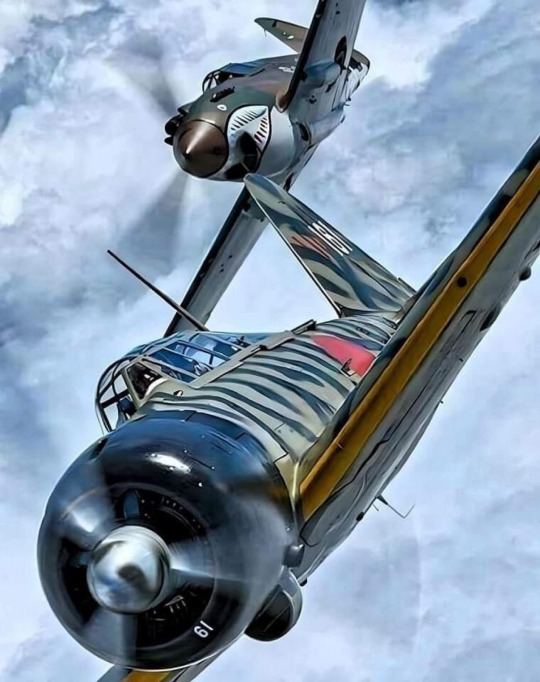
Japanese Zero chased by an American P-40 "Flying Tiger
@Sylvia70485099 🇫🇷🇺🇦via X
#a6m3 zero#imperial japanese navy#fighter#p 40 tomahawk#Curtiss wright aviation#chinese air force#ww2 history#ww2 aircraft#pacific theater#ww2#ww2 aviation#wwii aircraft#wwii planes
3 notes
·
View notes
Text

• Satoru Anabuki (Japanese IJAAF Ace)
Lieutenant Colonel Satoru Anabuki 穴吹 智, Anabuki Satoru, was depending on the source, the second or third highest-scoring flying ace of the Imperial Japanese Army Air Force in World War II, with 39 victories (51 claimed).
Born into a farming family in the Kagawa Prefecture, he graduated high school to take the entrance examination for the Juvenile Flying Soldier School and entered the Tokyo Army Aviation School in April 1938, In Oct 1940, he was enrolled in Tachi'arai flight school in Fukuoka Prefecture graduating in March 1941 in the 6th Juvenile Soldier Course and receiving a promotion to corporal in October. He was assigned to the 3rd Company of the 50th Air Squadron, stationed on Formosa in 1941. With the outbreak of the Pacific War, he fought in the conquest of the Philippines, where he claimed his first victory, a Curtiss P-40, on December 22nd, 1941 flying a Ki-27 aircraft. On February 9th, 1942, he shot down two more.
He returned to Japan with his squadron in Apr 1942, where the squadron was re-equipped with Ki-43 Hayabusa aircraft; Anabuki named his new fighter "Fubuki", partially based on his own surname. In Jun 1942, his squadron was transferred to Burma, where he would see combat over Burma, India, and southwestern China. He was promoted to the rank of sergeant in Dec 1942. On December 20th, 1942, he shot down a Blenheim bomber over Magwe, Burma, the first of many bomber victories. On December 24th, he shot down three British Hurricane fighters in combat over Magwe, Burma. In May 1943, he received a new Ki-43 fighter; he named this new aircraft "Kimikaze" after his wife Kimiko. He was seriously wounded in combat while flying "Kimikaze" over Rangoon, Burma on October 8th, 1943; after initial recuperation, he was transferred to the Akeno Army Flying School in Ibaraki Prefecture, Japan in Feb 1944.
In late 1944, after being cleared to fly once again, he shot down four US F6F Hellcat fighters over Takao, Taiwan and the Philippine Islands while ferrying Ki-84 Hayate fighters from Japan southwards. In December 1944, he was promoted to the rank of sergeant major. In the final months of the war, he was an instructor at Akeno with frequent combat assignments; in this role, he scored his 39th and final confirmed victory (53rd claimed victory), a B-29 bomber, over Japan while flying a Ki-100 fighter. After the war, he joined the Police Reserve in 1950, eventually reaching the rank of captain. Later, he joined the Japan Ground Self-Defense Force, becoming a helicopter pilot stationed in northeastern Japan; he retired from his military career in 1971 at the rank of lieutenant colonel. He worked for Japan Airlines before retiring in 1984. Many of Anabuki's victory claims during the Burma Campaign have been contested by comparing them to Allied records of lost aircraft on particular occasions. In several cases, there were no records of Allied planes even operating in the area where the claims were made. Anabuki passed away on an unknown date in June of 2005 at the age of 83 years old.
#second world war#world war 2#world war ii#wwii#military history#aviation#aviation history#ww2 aces#japanese history#imperial japan#airforce history
21 notes
·
View notes
Text

1942 06 04 Midway IJN Aircraft Carrier Akagi vs B-26 Marauder - Randall Wilson
Having taken off prior to the Japanese attack, American bombers based on Midway made several attacks on the Japanese carrier force. These included (…) four USAAF B-26s of the 18th Reconnaissance and 69th Bomb Squadrons armed with torpedoes.
One B-26, piloted by Lieutenant James Muri, after dropping his torpedo and searching for an escape route, flew directly down the length of Akagi while being fired upon by fighters and anti-aircraft fire, which had to hold their fire to avoid hitting their own flagship; the B-26 strafed Akagi, killing two men. Another B-26, piloted by Lieutenant Herbert Mayes, did not pull out of its run after being seriously damaged by anti-aircraft fire, and instead flew directly at Akagi's bridge. Either attempting a suicide ramming or out of control, the plane narrowly missed striking the bridge, which could have killed Nagumo and his staff, crashing into the ocean. This experience may well have contributed to Nagumo's determination to launch another attack on Midway in direct violation of Yamamoto's order to keep the reserve strike force armed for anti-ship operations.
21 notes
·
View notes